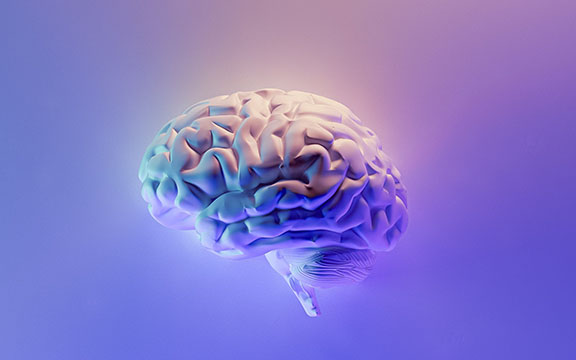
Photo: Photo by Fakurian Design on Unsplash.
I wondered if I could look to Western neuroscience for clues on how, by working directly with the nervous system, we could pave a pathway to samadhi. I had an inkling through my studies of the autonomic nervous system—and in particular of homeostasis (the body’s innate ability to restore itself to balance)—that deliberate practices that restrained autonomic, physiological processes were a starting place for exploring how we could override habitual, unconscious responses to the world and move into deeper states of expanded awareness. The basic functions of the nervous system are described in very similar ways by Western scientists and yogis. The yogic conception makes use of something called prana, which has a multitude of meanings depending on context.
Prana means “that which causes things to move.” It exists on a macro and micro level. On a macro level, prana creates and upholds order in the cosmos. On the micro level of the body it performs the functions that keep the body moving and in a constant symbiotic relationship with the world it lives in (such as breathing and temperature change). Prana is called by different names depending on the functions it performs, though it nevertheless remains one thing. There are five primary expressions: prana (incoming nourishment), apana (outgoing waste), samana (assimilation), vyana (distribution), and udana (outward expression).
These five processes are involved with every interaction we have, internally and with the external environment. In regard to breathing: prana is our inhalation; apana the exhalation; the exchange of gas at the level of the alveoli is samana; distribution of oxygen to every cell of the body is vyana; and speech, hiccups, coughs, sighs and yawns are udana. In regard to eating: prana is incoming food; apana is outgoing waste; samana is digestion; vyana is the distribution of nutrients; and udana describes the actions we express outwardly in the world because we are nourished. These five processes describe how the world we live in sustains us, which is another way of seeing the world as our extended, physical body. The description of prana in the Yoga texts is varied in regards to detail, but cohesive in the explanation that it is prana that powers us. When prana leaves the body, our life as we know it is over.
The Brain Stem, Abhinivesha
According to Western science, the mechanism that controls these same physiological functions in our body is the nervous system. The brain stem houses what are collectively called the survival functions, the things that our body does automatically, so we don’t have to think about doing them to stay alive. These automatic, or autonomic functions, include regulating respiration, heart rate, digestion, elimination, sleep, sexual reproduction and maintaining body temperature and blood pH. If we had to think about consciously doing any of those things, we wouldn’t be able to survive. We couldn’t eat if we had to think about breathing or beating our heart, and we certainly couldn’t sleep if we had to think about sleeping—just thinking about it would keep us awake!
It could be said that the entire purpose of the brain stem and our survival functions is to help us to cling to life, in a most literal sense. Thus, on one level abhinivesha, clinging to life, is the foremost job of the brain stem. While this is not explicitly stated in Yoga Sutras, there are an abundance of hints that speak about nervous system functions in different ways. For example, sutra 1.30 speaks of sickness, laziness, sensual preoccupation and failure to be consistent in practice as obstacles to a calm mind. Sutra 1-31 says these obstacles show themselves as shaking of the limbs, disrupted breathing (both ruled by the nervous system), and anxiety, which is also the sympathetic nervous system’s response to a perceived environment. The body is the receiving-end organ of mental and emotional impulses; meaning, what happens in the mind happens in the body. Therefore, it follows that by steadying the body through practices of restraint, calmness and challenges, the upstream, subtle receiving organ of the brain and all that it processes (including our thoughts) will be influenced, steadied, as well.
While the brain processes information and is the central control mechanism for our life, it does not cause existence to happen, or cause us to be. When scientists study the brain and make statements such as “the prefrontal cortex is responsible for our executive functions,” what they are saying is that decision making, language, long-term planning, compassion and other higher-level functions are processed and organized through this area of the brain. We do not know where the impulse to survive, to live, came from, but somehow, hundreds of millions of years ago, single-celled organisms had the impulse to move away from danger and move towards safety. That impulse exists within us in our brain stem, and is about 360 million years old. Other structures of our current brain makeup developed later, such as the limbic system and prefrontal cortex.
If the brain stem’s purpose is to maintain life functions, to literally cling us to life, where could we, theoretically, see the other kleshas represented in the brain? (…to be continued in the next installment)
About the Author:
 Eddie Stern is a Yoga instructor and author from New York City. His latest book is One Simple Thing, A New Look at the Science of Yoga and How it Can Change Your Life, and his newest app is “Yoga365, micro-practices for an aware life.” His daily, live Yoga classes can be found on www.eddiestern.com
Eddie Stern is a Yoga instructor and author from New York City. His latest book is One Simple Thing, A New Look at the Science of Yoga and How it Can Change Your Life, and his newest app is “Yoga365, micro-practices for an aware life.” His daily, live Yoga classes can be found on www.eddiestern.com
(Reprinted from Hinduism Today)

